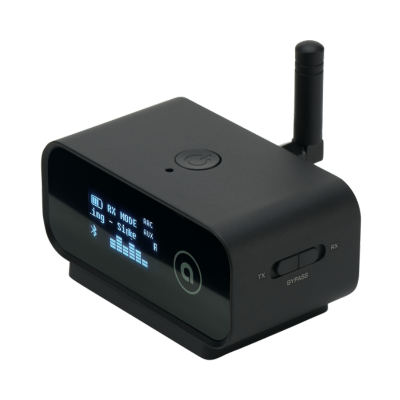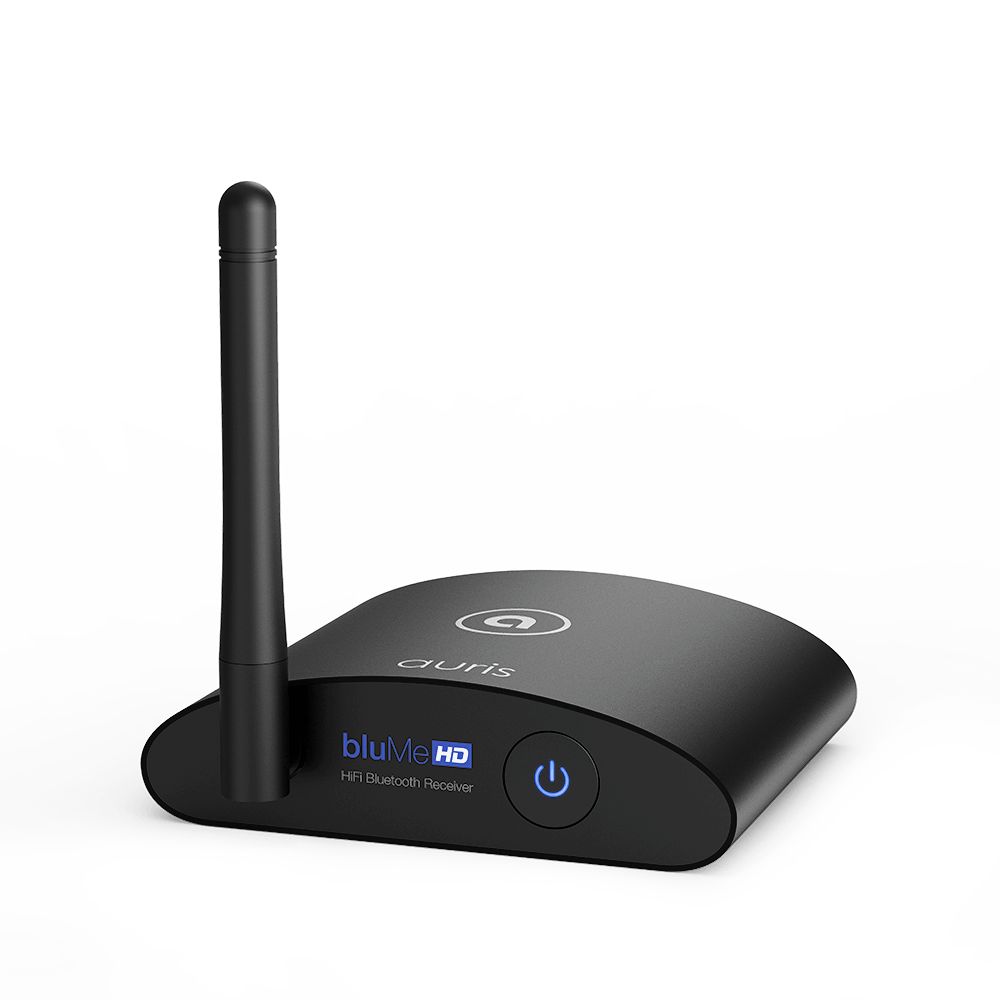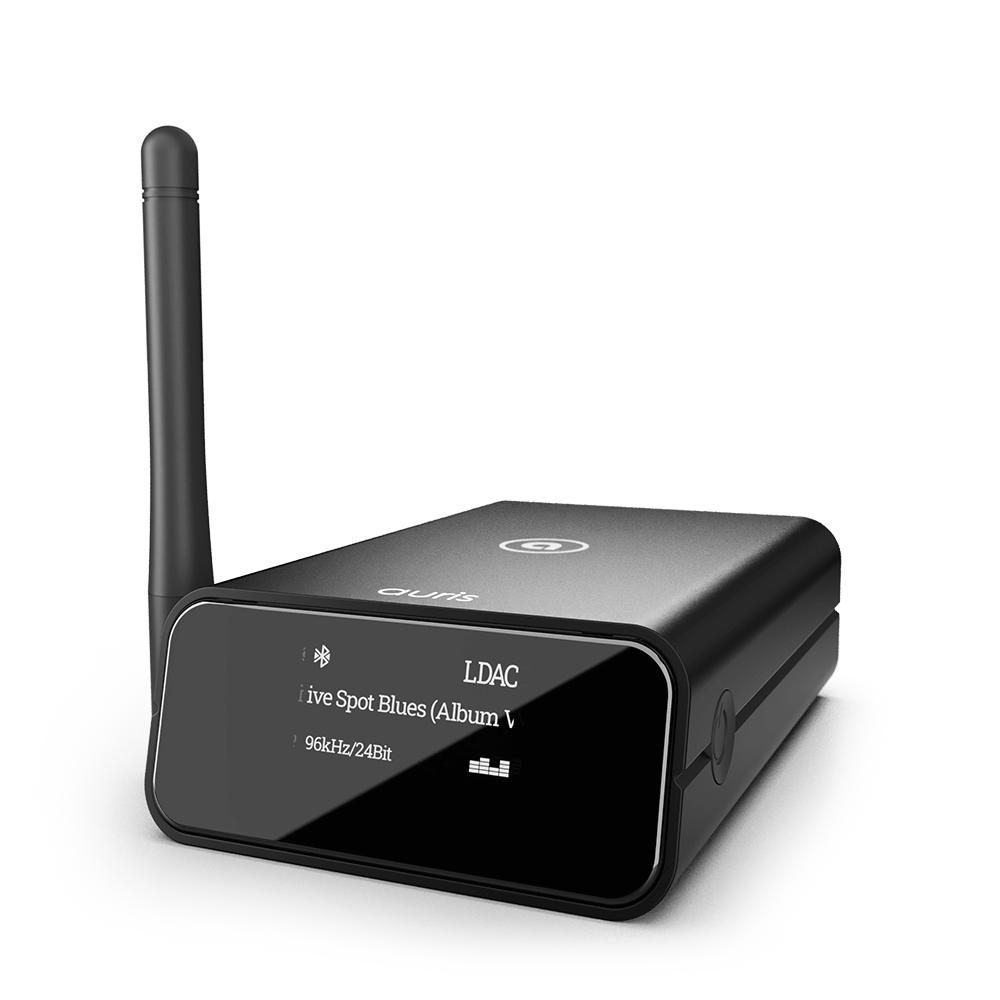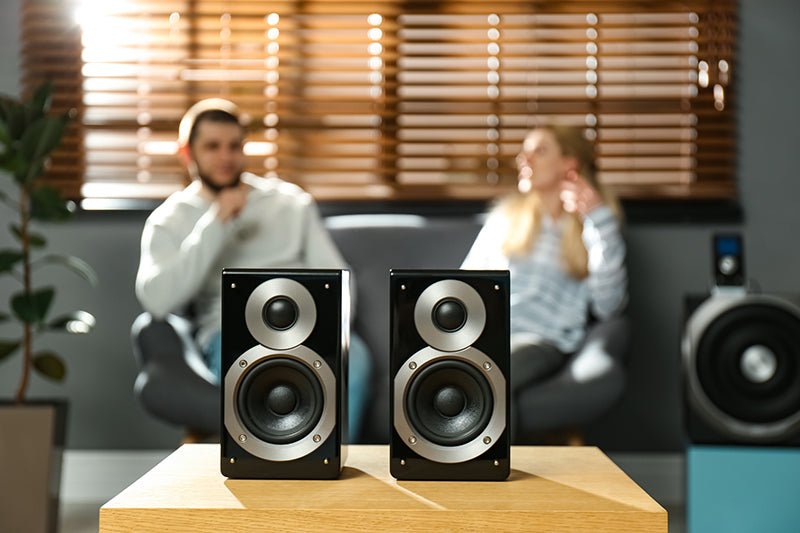
Wireless technology has come a long way since its fruition in the late 90s, and what was once a rare feature is now a necessary commodity in our everyday lives.
Everywhere we look, it seems like our devices are using Bluetooth. Our phones, earbuds, tablets, computers, and even appliances make use of this important tool in wireless communication. Odds are you’re reading this article on a Bluetooth compatible device right now!
But not everything we own is completely wireless, and it can be tough to want to get rid of our favorite pieces of tech just because we want to be able to use the endless benefits of Bluetooth. The good news is that there are workarounds that can combine the ease of wireless communication with the quality of wired devices.
All you’re going to need are Bluetooth receivers or transmitters. Let’s look at the difference between the two and then think about which one might work best for you.
Analog vs. Digital vs. Bluetooth
If your audio device isn’t using Bluetooth, the chances are it is a wired product that uses either analog signals or digital signals.
Analog devicestransmit sound through a continuous analog signal. It records extremely precisely, giving the most clear and refined sound possible. Basically, if a sound is recorded using analog, you will then be able to hear exactly what was recorded when you listen back on a compatible device.
This makes analog systems very popular among audiophiles or anyone who is enthusiastic about high fidelity sound reproduction. These are typically people who love listening to record players or analog stereo systems that recreate the sound perfectly.
Digital devicescapture binary codes of a sound that reflect the sound’s intensity at certain frequencies and pitches. It still delivers an amazing quality sound, but it’s definitely noticeable when compared to analog.
Bluetoothuses wireless transmission to communicate information through the air. Its quality is lower than both analog and digital, though not by much.
Since analog and digital devices can deploy a higher quality sound when compared to Bluetooth, a lot of people don’t want to part with their dated sound systems despite wanting to experience the benefits of wireless technology.
Luckily, there are ways that you can turn any analog or digital device into a Bluetooth compatible one without sacrificing the sound quality.
What Is a Bluetooth Transmitter?
Not all devices are Bluetooth compatible. In order to make one compatible, you would need a Bluetooth transmitter. This is a device that enables TVs and home theater systems to stream high definition sound to headphones and speakers.
In other words, a transmittersends outa Bluetooth signal for you to be able to control from a compatible device, like a smartphone or tablet. It works by connecting to a device’s digital or analog output and sending a signal to certain Bluetooth devices.
It’s really great for being able to listen to your favorite movies or TV shows without disturbing the people around you. Since you can connect your headphones wirelessly to the television, you can comfortably move around your home while still enjoying the show.
What Is a Bluetooth Receiver?
By comparison, a receivertakes ina Bluetooth signal to stream audio from an existing non-compatible Bluetooth device. A Bluetooth receiver can attach to your favorite analog or digital stereo system, allowing you to send your favorite songs and podcasts from your phone to the speaker.
This can make any audio system wireless, turning your stereo system into a Bluetooth controllable device. This means you can get the quality sound you desire from digital or analog systems while simultaneously experiencing the benefits of wireless connectivity.
Which Is Better: Bluetooth Receiver or Transmitter?
It’s less a question of which is better in general and more a question of which works betterfor you? Both of these products have amazing features that will be entirely beneficial to your daily routines.
If you’ve got an old stereo system that you really love because of its appearance or sound quality, a Bluetooth receiver is the way to go. This is one of the best ways to make any wired stereo Bluetooth compatible, so you’ll be able to play your favorite music from Spotify or Apple Music from a stereo that normally only takes tapes or records.
On the other hand, if you want to be able to stream sound from a device that isn’t Bluetooth compatible, such as your television, you’ll want to get yourself a Bluetooth transmitter. This is perfect if you just got a fancy new wireless speaker system but need something to be able to stream the sound from your television. It’s also great if you like wearing headphones to enjoy your media.
Do Receivers and Transmitters Distort Sound Quality?
Bluetooth has come a very long way since its creation in the late 90s. Thanks to its most recent update, audio data is now able to stream further and faster than it ever did before. However, when using receivers or transmitters, the characteristics of the sound can change due to the usage of a secondary source.
One of the main issues with Bluetooth receivers is that the audio becomes delayed from its source. While this isn’t normally noticeable when playing music, it can be frustrating during a movie or television show. This is because it often appears that the character’s lips are out of sync with their dialogue.
It’s important to get a receiver or transmitter that uses low latency technology, as this will reduce the amount of time it takes for the signal to reach the device. Standard Bluetooth audio takes 170-270 ms, so to eliminate syncing issues, you’ll want a device that only takes 30-40 ms.
Also, Bluetooth headphones often suffer from poor sound quality when compared to wired ones. To maintain wired quality while simultaneously providing the ease of Bluetooth, it might be a good idea to consider a Bluetooth amplifier. This can turn any wired headphone into a Bluetooth compatible device as well as improve the original audio quality with LDAC audio coding technology.
What Is the Range of a Receiver and Transmitter?
The first Bluetooth devices were only able to send signals within a 10-meter range, or about 32 feet. And when you take into consideration that walls and obstacles can lessen this signal, it means that you didn’t have a lot of mobility.
But as newer versions of Bluetooth arose, it became easier to send audio signals to greater distances. Most receivers and transmitters now have a wireless range of30 meters, or about 100 feet. This will let you listen to music or your favorite shows from a room or two down the hall.
Do Receivers and Transmitters Interfere With Other Devices?
An issue among some receivers and transmitters is that they might lose signal or cross signals with other Bluetooth devices in the near vicinity. Wi-Fi can even interfere with your Bluetooth signal strength.
If you’re in the market for one of these devices, it is important to get one with high interference tolerance. This is typically achieved through a chipset that allows 24-bit audio and uses aptX HD, as this will provide a much more stable signal, especially in areas with a lot of interference.
In Conclusion
Receivers and transmitters are both important tools for Bluetooth technology and even more important for audiophiles who love a good quality sound. While there are similarities between the two, the main difference is that a receivertakes inBluetooth signals, whereas a transmittersends outthe signals.
Receivers are great if you want to be able to stream music to one of your favorite wired audio systems, and a transmitter is perfect for sending Bluetooth sound from a television to wireless audio devices. You could also get an amplifier to improve the audio quality of wired headsets.
Regardless of which product you choose, your enjoyment of your favorite media will be unmatched.
Sources:
Basics of Digital Recording | artsites.ucsc.edu
Why High-Fidelity Streaming Is The Audio Revolution Your Ears Have Been Waiting For | Forbes
WiFi and Bluetooth interference - diagnosing and fixing | Code Journey





